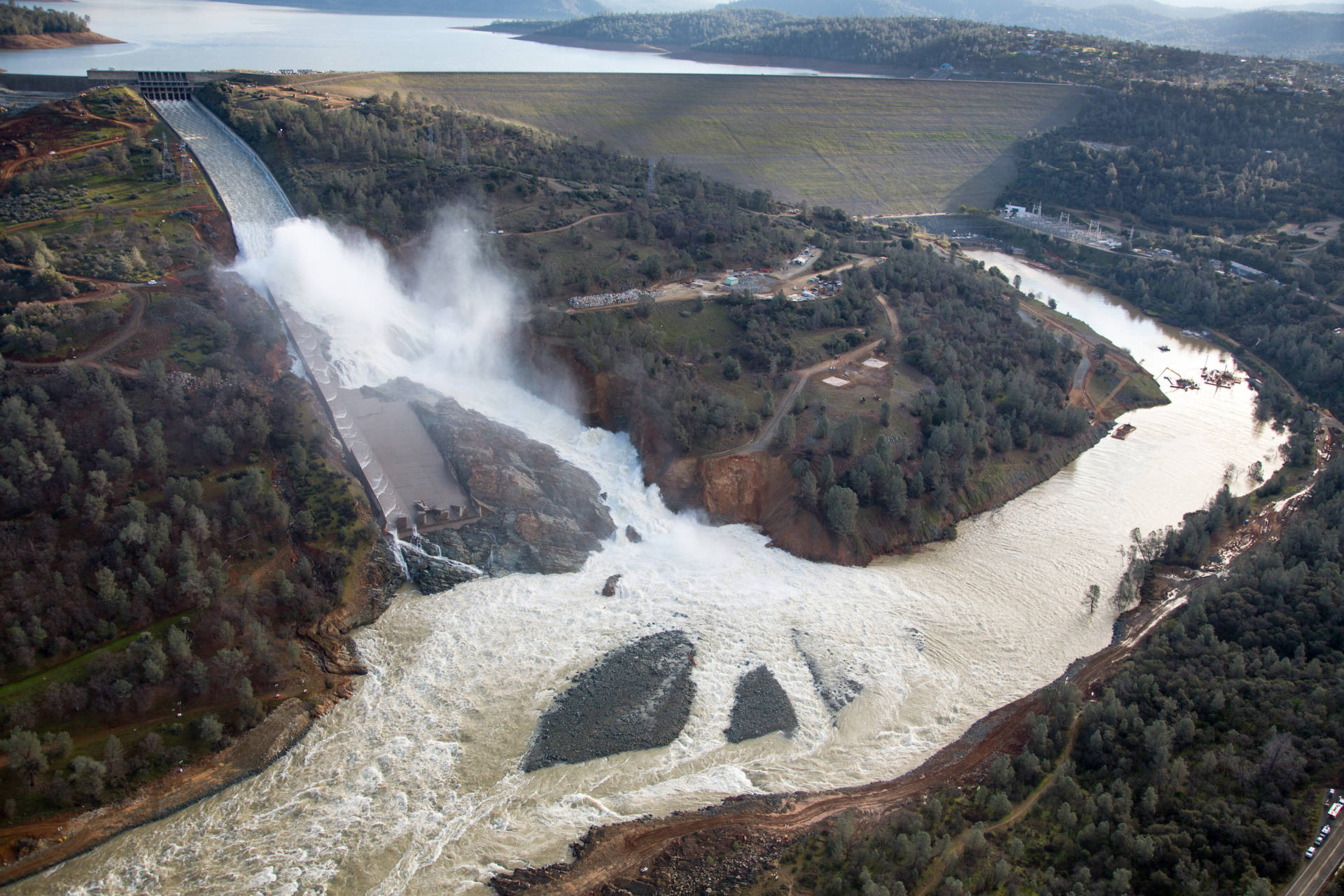Among the allegations in the suit:
- That DWR's maintenance of the spillway, in particular, was long known to be inadequate. Among other things, the suit alleges that agency officials "would mark projects or tasks as complete when they had not even been started, and reports were filed indicating that they were done."
- That DWR has attempted to cover up evidence of its poor management of the dam and of safety problems there by destroying evidence at the shattered concrete spillway and redacting reports on the structure and the effort to rebuild it.
- That department leadership has deferred to the demands of the State Water Contractors -- more than two dozen water agencies who pay for operations and maintenance at Oroville and other State Water Project facilities -- to put off maintenance and safety studies at the dam.
- That DWR attempted to silence employees who voiced concerns about operations at Oroville.
- That DWR maintained two sets of books in an attempt to conceal its true costs and spending.
- That two Oroville Dam supervisors -- both specifically named in the complaint -- engaged in a range of improper or illegal conduct, including theft, purchase of substandard supplies and cronyism in awarding overtime.
- That women and minority workers at the Oroville site were subject to sexual and racial harassment that was known to supervisors and went unpunished. The suit includes a picture of a noose that it says was hung in a meeting room and directed at an African-American employee at the Oroville facility.
Department of Water Resources spokeswoman Erin Mellon said the agency does not comment on pending litigation.
Scott Huber, Oroville's city attorney, said in a statement that the emergency evacuation last February was devastating to the community and "caused an unnecessary crisis that should have been seen coming over the past several years.”
“DWR’s alleged failures are well documented in the public record," said Adam Shapiro of Burlingame-based Cotchett, Pitre and McCarthy, one of the firms representing the city. "The complaint says this crisis was caused not by an act of God, but by a failure of management and supervision.”
Earlier this month, an independent forensic team appointed to investigate last February's near-disaster issued a report saying DWR had for decades missed warning signs that the concrete spillway was headed for failure. The 584-page document also faults "long-term systemic failures" by the DWR, its regulators and the dam industry to address the spillway's vulnerabilities.
The forensic team also said the agency was somewhat "overconfident and complacent" in regard to the integrity of State Water Project facilities. The team's report called for organizational and cultural changes at DWR to emphasize dam safety.
At a state Assembly oversight committee last week, DWR officials said they disagreed that the agency had been complacent and said they were already acting to strengthen its approach to dam safety.
Wednesday's lawsuit signals what could be a wave of lawsuits arising from last year's spillway crisis. The city of Oroville is one of hundreds of parties that last year filed nearly 500 claims worth an estimated $1.2 billion against the state for losses reportedly suffered during the spillway crisis.
As of last week, the Department of General Services, which administers the state’s Government Claims program, had rejected every one of the more than 350 claims it had reviewed. That includes the Oroville claim, which was turned down last July.
For those who want to pursue their claims, filing suit is the next step. Lawyers for several clients who submitted large claims last year have said they intend to file lawsuits sometime this month.
Among the potential suits is one for a Butte County farming operation that said it lost 27 acres of walnut orchards to erosion as a result of the spillway emergency and subsequent water release decisions made by the Department of Water Resources. That claim, filed in August on behalf of JEM Farms and Chandon Ranch, was for $15.45 billion.
A separate claim sought $1 billion for other landowners along the Feather River who reported losing land or suffering other damages after the spillway failure.
Any damages awarded in future legal actions would come on top of the state’s cost for responding to the spillway failure, rebuilding the massive concrete structure and building a new protective system for the unlined emergency spillway — costs that could top $600 million. The Department of Water Resources has said it hopes that the Federal Emergency Management Agency will cover 75 percent of the price tag.

